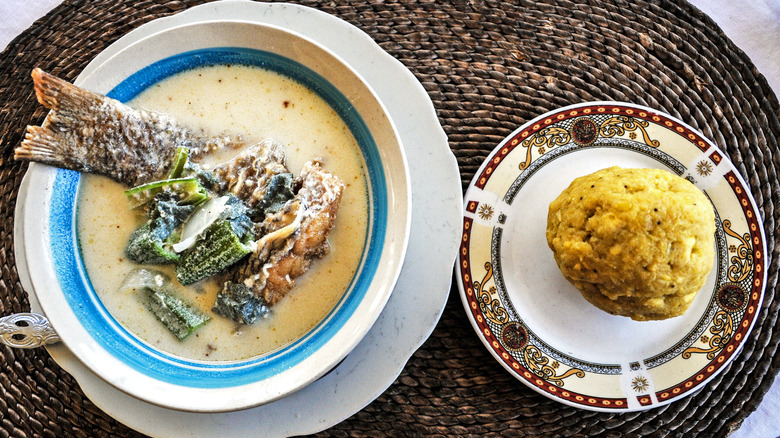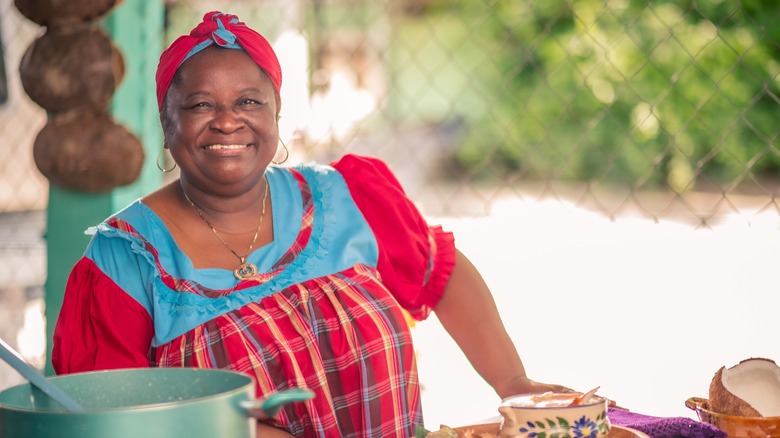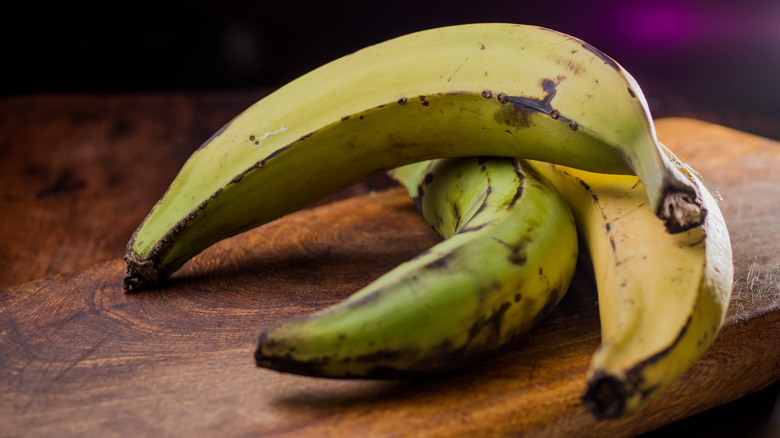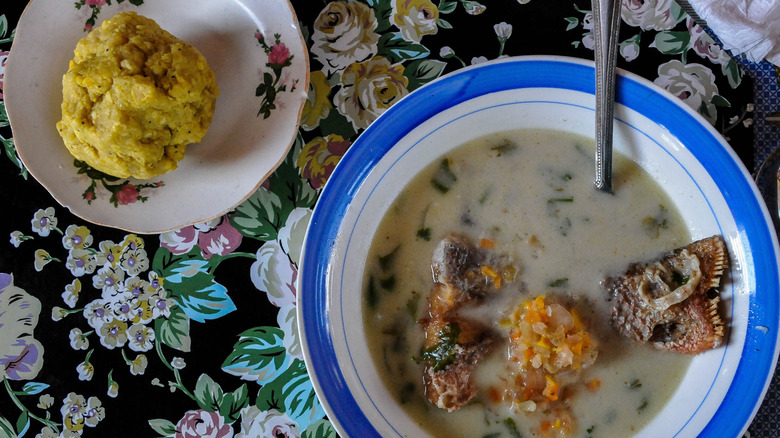Hudut: Belize's Traditional Coconut Fish Stew
Belize is a small country in Central America with stunning Caribbean coastlines and dense tropical rainforests. Aside from the beautiful geography, this country also has a diverse cultural makeup: it was first inhabited by the Mayans, then colonized by the English, and then served as a refuge for escaped enslaved Africans. The people inhabiting Belize now can often trace their roots back to these cultures or other groups such as Mennonites. For such a small population, this high diversity has affected the country's culture — including the food. Belize never really developed a national cuisine because of the various identities and influences (via Adventure Life). According to Adventure Life, due to this constant cultural infusion, "Belizean food offers spicy Creole creations, standard English corned beef, and the Mayan delicacy of the fried paca (a small jungle rodent)."
Another one of these people groups is the Garifuna, descendants of an Afro-indigenous population from the Caribbean, according to Minority Rights Group International). They created the popular hudut dish, a traditional coconut fish stew with mashed plantains. This sweet and spicy blend has captivated many visitors to the country and is a result of the beautiful blended Belizean culture (via The Takeout).
History of hudut
To understand how the hudut dish developed, it is important to understand the history of its creators — the Garifuna people.
Sometime in the 1600s, two Spanish ships carrying enslaved Nigerians were wrecked off the coast of Saint Vincent, an island in the Caribbean. The survivors swam to shore and were given shelter by the local tribe. The two ethnicities blended over the years and eventually formed the Garifuna people. Some of this group migrated to Belize when a civil war in Saint Vincent broke out in the 1830s, causing many to flee (via Arousing Appetites).
According to Arousing Appetites, "there are two main staples in almost all Garifuna foods: green plantains and coconut milk...All these flavors lend themselves to dishes that are sweet, spicy, creamy and slightly bitter all at once." Hudut is a dish that includes all of these elements.
This dish, also occasionally called serre, is a result of the intermingling of cultures and is embraced and loved by Belize's diverse people (via The Takeout).
Ingredients in hudut
The ingredients that make up traditional hudut are typical for many island or oceanside nations. Countries like Thailand and Brazil, for example, both have unique dishes that include coconut milk and fish together (via Belize Adventure).
However, with the inclusion of green plantains and certain spices, this dish truly reflects the Garifuna people's culture. A typical meal of hudut includes green and ripe plantains that are mashed together. Fish, often a red snapper, is also added as the main ingredient. Coconut milk is added for creaminess and balances the spices. Vegetables like onion and okra are tossed in, with okra showing the African roots. And typical seasonings often include garlic, cilantro, oregano, salt, and pepper (via Belize Hub). Together, this savory yet sweet and spicy dish creates a dance on the taste buds that is uniquely delicious.
A side dish often paired with hudut is fu-fu, a mixture of boiled plantains formed into a ball (via Belize Hub).
How to make Hudut
Hudut is relatively easy to make at home. The traditional ways of making the dish do not include a food processor or any other machinery, but they can be used today to speed up the cooking process (via Arousing Appetites).
The first step is to peel and boil the green and ripe plantains in a pot of water for around 20 minutes. Once finished, the plantains can be thrown in a food processor, or you can use a moral and pestle for an extra workout. The consistency shouldn't be too dry, and water should be added to create a smooth texture (via Belize Adventure).
After this, boil coconut milk in a pot and add the seasonings and vegetables. Separately, the cleaned and chopped fish halves can be sautéed until golden, then added into the coconut milk pot. When finished, it can be added to a soup bowl and served with a side of fu-fu (via Belize Adventure).



